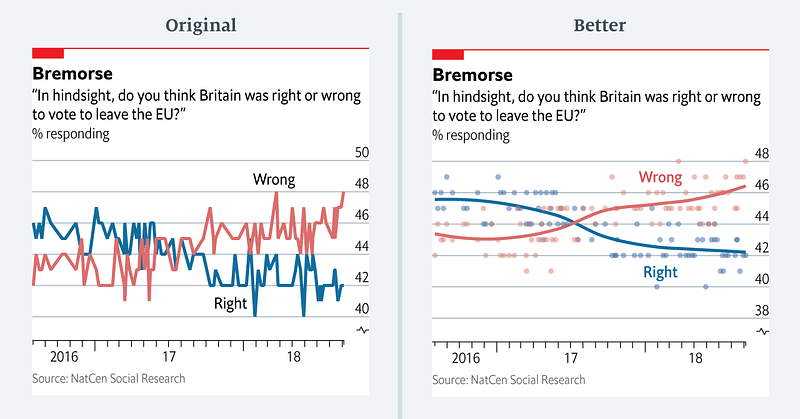📚 The CoCalc Library - books, templates and other resources
License: OTHER
Kernel: Python 3
Using statsmodels lowess
Copyright 2019 Allen B. Downey
MIT License: https://opensource.org/licenses/MIT
In [77]:
This article suggests that a smooth curve is a better way to show noisy polling data over time.
Here's their before and after:

And here's their data:
In [78]:
Out[78]:
In [79]:
Out[79]:
The following function uses StatsModels to put a smooth curve through a time series (and stuff the results back into a Pandas Series)
In [80]:
Here's what the graph looks like.
In [81]:
Out[81]:
In [ ]:
In [ ]: